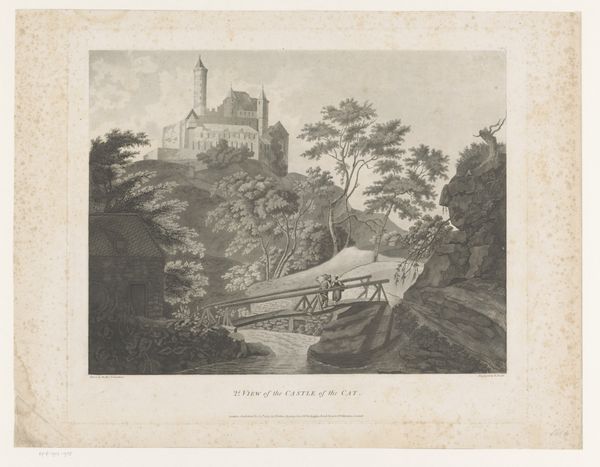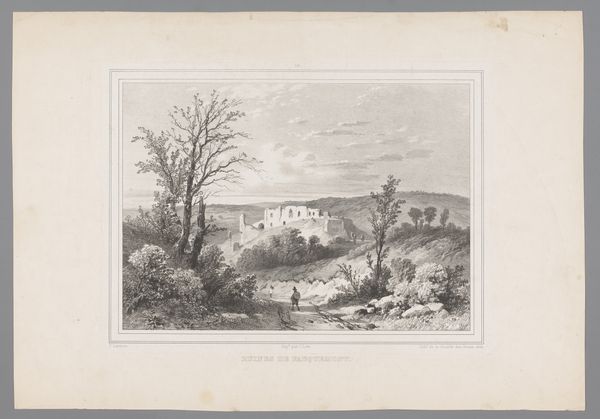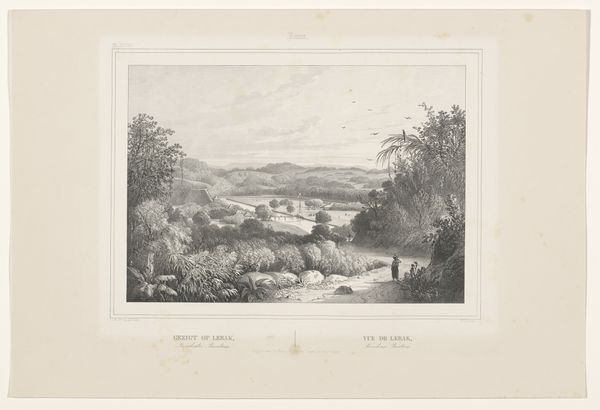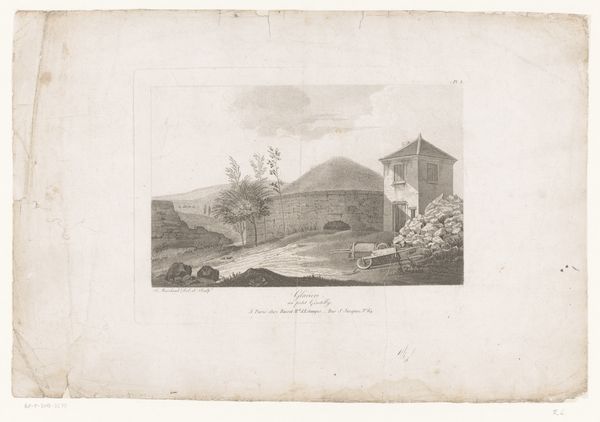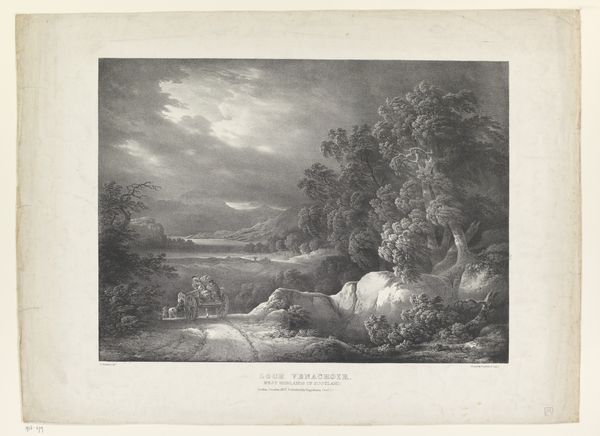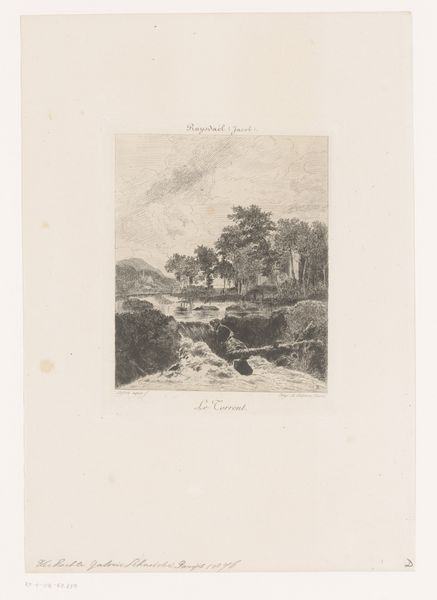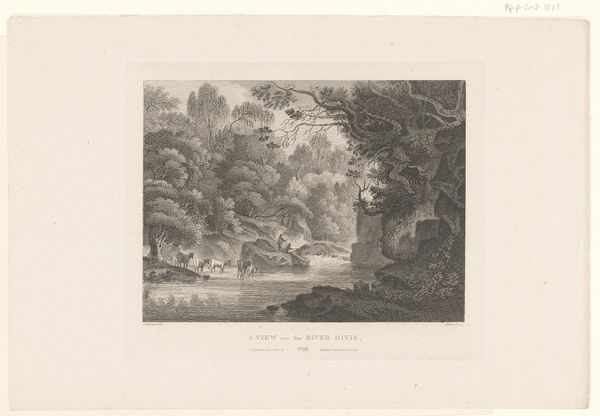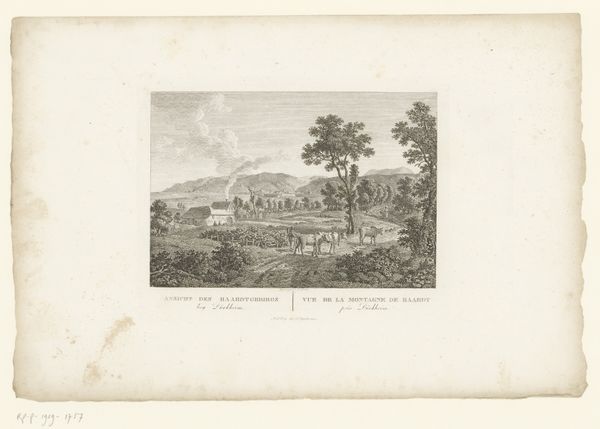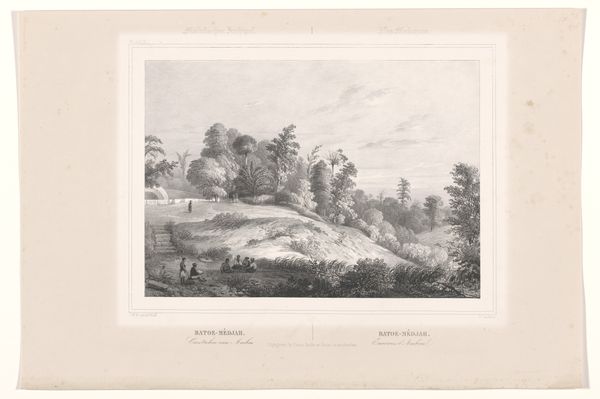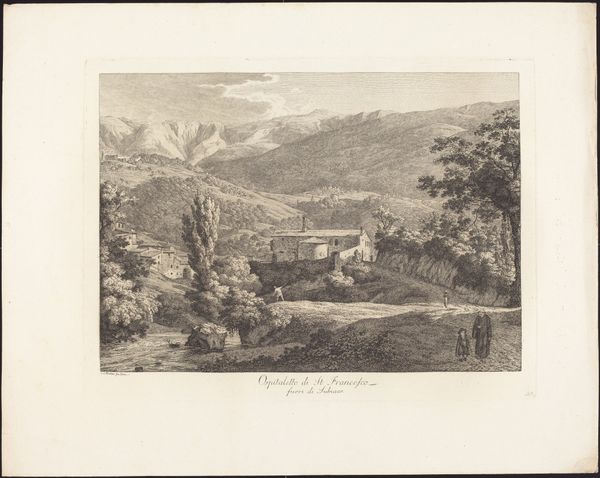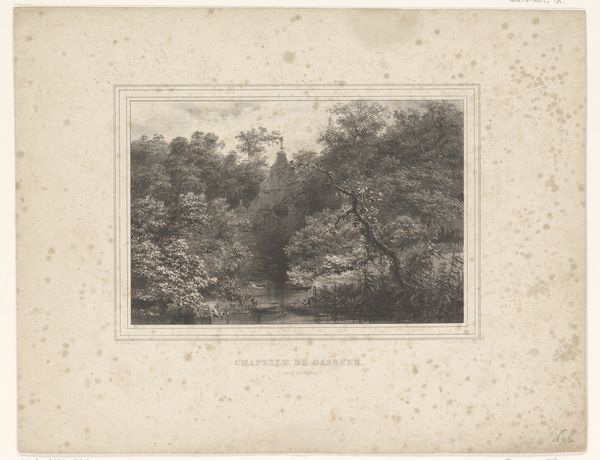
print, plein-air, engraving
# print
#
plein-air
#
old engraving style
#
landscape
#
romanticism
#
engraving
Dimensions: height 229 mm, width 295 mm
Copyright: Rijks Museum: Open Domain
This lithograph, made by François-Louis Français, presents a Roman landscape seemingly untouched by modernity. But is it? What is the public role of this kind of art? This image creates meaning through its cultural references to the classical world. It was made in France during the 19th century, a period defined by its fascination with the picturesque. This was a reaction to industrialization, as artists and writers sought refuge in idealized depictions of nature. The print's emphasis on the landscape and the romanticized figures suggests a longing for a simpler, more harmonious existence. However, it also reflects the social conditions of its time. The absence of overt social commentary might be interpreted as a conservative stance, subtly reinforcing the status quo by celebrating an idealized past. To better understand this artwork, we can look at exhibition reviews, the artist's personal correspondence and other works made in the same period to appreciate the nuances of its engagement with the social and institutional context of 19th-century France.
Comments
No comments
Be the first to comment and join the conversation on the ultimate creative platform.


